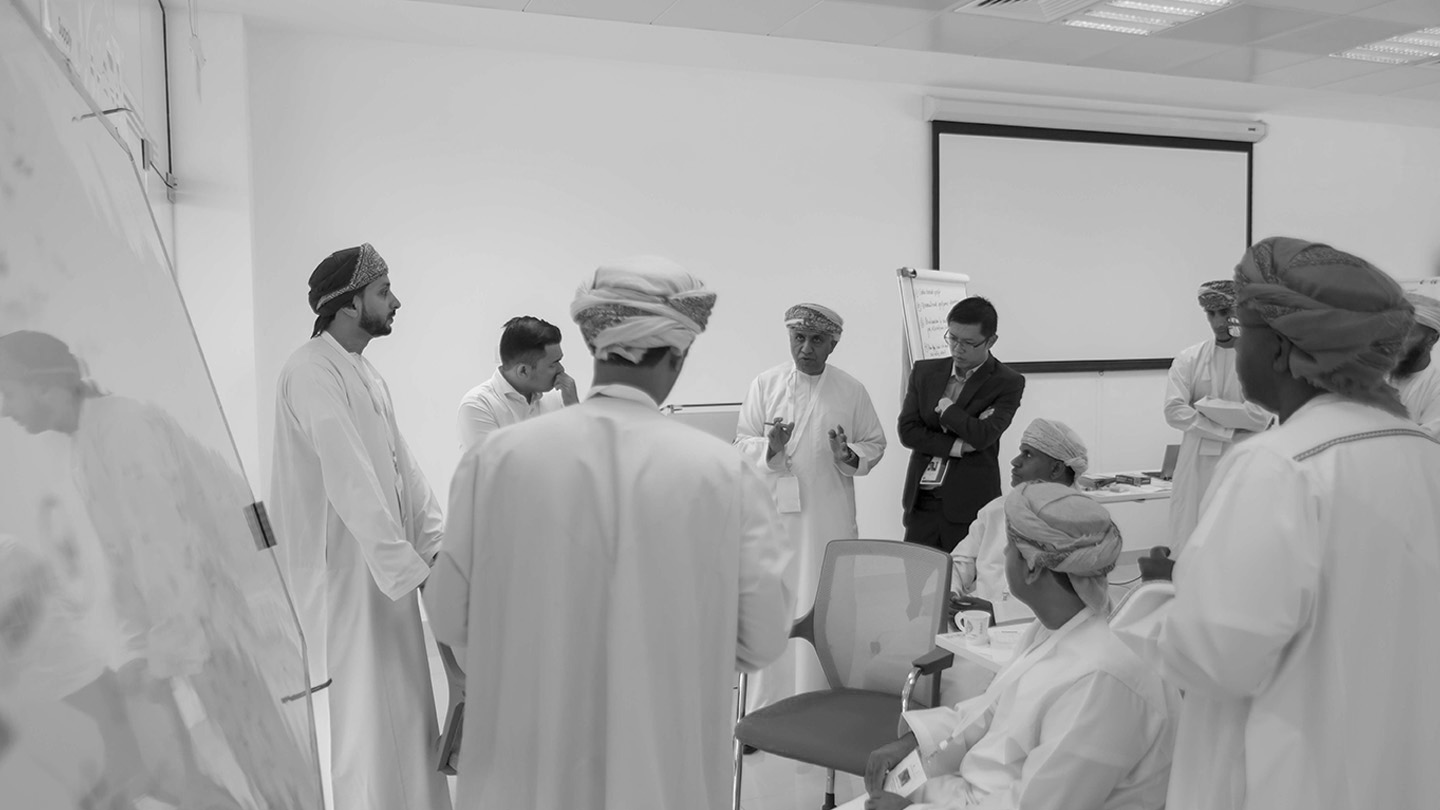
By Jasmin Johnson
PEMANDU Associates are known for our “labs” – intensive and extensive facilitated workshops that aim to solve intractable problems faced by governments and other organisations. We often use the lab approach to jumpstart a transformative initiative or to catalyse the system so as to be capable of absorbing major change.
What is a lab?
A lab is a highly structured and focused process of planning for implementation. The aim is to embed substantial and sustainable change. Our labs represent the beginnings of a new way of working, one which aims to move the needle on prioritised initiatives towards achieving ambitious goals which may have stubbornly eluded our clients so far.
What micro-culture do we aim to create in each of our labs?
- We focus single-mindedly on finding a way forward. We aim to break impasses, to corral enthusiasm, and to drive action towards progress.
- We do this by focusing on implementation – the things which can practically be accomplished. We delve into the details of implementation, leaving no room for ambiguity in the actual doing of things, but plenty of room for review, revision and course correction.
- We are not afraid to bring together long-feuding stakeholders. In fact, we believe that this is necessary to break impasses.
- We verify that what we are developing will actually move the needle towards what we aim to achieve. We look at a problem holistically and package a comprehensive set of solutions to address it.
We only encourage a lab approach – which is time and cost intensive – for problems that have persistently escaped their solution. We use a tried-and-true methodology in our labs – a highly structured process designed and refined over the course of 150 engagements in 30 countries.
Lessons from Facilitating Labs
Here’s what I’ve learned about the art and science of facilitation, especially facilitating to drive implementation and action, since I started with the firm ten years ago:
- You have to personally believe in the possibility of change.
I facilitated my first 8-week lab in South Africa in 2014. I was working with an excellent technically-oriented team that was prepared to do everything necessary to move their particular project. However, they were unsure whether their hard work would yield any results. The head of the local project team pulled me aside and nervously asked me: “Do you believe this can be done?”
At the time, I naively said yes. I assumed I wouldn’t be given a scope of work that was unachievable. In hindsight, I can say that I gave the exact right answer there, but merely by sheer luck. A the time I hadn’t yet realized how important it was for me to have conviction about the success of the work. I now know that that such conviction is necessary for successful transformation. Transformation is hard work, and as Idris Jala says, it is “the game of the impossible.”
However, if you, as the facilitator, don’t truly believe that the lab’s objective is in fact achievable, the likelihood of success will be compromised. Transformation is as much emotional as it is technical and methodological work. As a facilitator, you have to put your heart in the ring too.
- “You can’t change what people think. You can only change what they do.”
PEMANDU has had many long-term engagements with public sector agencies, where facilitation skills are needed on an ongoing basis. We’re often asked by the leadership of those agencies to facilitate “action” – our clients want to see actual results in their pursuit of transformation. Our Chairman, Idris Jala, often tells us that we cannot afford to wait for people’s minds to change. We never presume that we can directly transform anyone’s thinking. Our immediate work – the way we get Big Fast Results – is to help people find new ways of working. A new (and hopefully improved!) way of doing things will lead to a better outcome. And when people see better outcomes, their minds may be changed. We hope for that, but we don’t wait for it. In some instances, when we’re lucky enough to stick around long enough, we are able to observe the personal transformation first hand, and that is when you know that change has really taken root.
- The more clearly you can define the problem, the more clearly you can see the solution in that same problem.
The classic approach to facilitation is to first find the problem, and then to find the solution, or set of solutions, to exactly that problem. It is then said that it is difficult to find a balance – in terms of time and effort – between discussing the problems and discussing the solutions, as there is often a psychological cost to focusing on one over the others.
Over the years, I have found this to be a false dichotomy. The more we clearly articulate the problem in our labs, the further along we will already have gotten in articulating the solution. I once facilitated a lab with a languid and disinterested set of waste management officers from a city council.
“We’ve talked about these same problems for the last five years,” they said. “We can’t implement the regulation because the public doesn’t want to separate their waste.”
“Whom exactly are you expecting to separate their waste? Households? Businesses?”
“About 70% residential; 30% businesses or commercial establishments.”
“Which group is most resistant to waste separation?”
“Households, because they don’t know what to separate, and the subcontracted waste collection companies also haven’t standardised how to collect, so they don’t collect it consistently.”
“Do you know exactly what is causing their confusion? Do you think seeing their recyclables inconsistently collected is causing some demotivation?”
Notice how in one way the entire dialog is merely an exercise in describing the problem at hand, yet in another way each new description of the problem is a step towards the solution, simply because the problem is coming successively clearer into view.
- The most difficult part about bringing about transformation is the “letting go,” not the “adding on.”
Our labs often bring together long-standing adversaries to resolve long-standing issues. At the start of the lab process, you will have to dig beneath the surface to get to the core issues, which can sometimes result in argument and even conflict. In our view, that’s not necessarily a bad thing. You want to get to the heart of the issue – what has placed a roadblock on progress for so many years. In one of my most “explosive” labs, with a public agency in Malaysia, we seemed stalled on an issue, as people accessed and expressed their true feelings on doing a particular project with skill-building institutions. After days of working through reams of studies and data, finally, one of the feuding stakeholders said, “I think I have to realise my way is not going to work.” He finally let go of the way he had been doing things for a number of years – a way that didn’t work.
Sometimes the way forward involves working through conflict; at other times, it involves working to drop the things that cause the conflict. These are different kinds of difficulties, but effective facilitation necessarily involves transforming that conflict in some way. So often, in finding a way forward for transformation, we want to add new things. But real transformation also involves the painful work of shedding those approaches and initiatives standing in the way of moving forward.
- The Driver is already present in the room.
Facilitators are often brought into a chaotic situation, where different stakeholders have completely different ways of thinking about the issue. Indeed, the primary work of a facilitator is to organise that chaos around the topic at hand so as to shape it into a journey that will lead the stakeholders, collectively, to the answers.
Our chief task as facilitators is to structure the problem-solving process. However, it is critical to keep in mind that structuring the problem-solving process for our clients is not the same as solving our clients’ problems for them. Our task is only the former, never the latter. This is because any solution we impose on our clients would inevitably fail to secure their buy-in. Our clients will only be committed to those solutions with which they themselves came up and which therefore express their own ideas, values, and culture.
In one of my early engagements in the Middle East, I found my lab group doubt the process because they feared that I would eventually lead them to answers that did not suit their cultural context or their unique religious situation. “You won’t go anywhere you don’t want to on our journey,” I would often remind them. “This is your journey, and you are in the driver’s seat.”
[We often use the metaphors related to “drivers” and “driving” in our work, as it is a play on our company’s name: Pemandu, which means “driver” in Malay, but also aptly describes the energy we intend to put behind the work of implementation.]
- The tedium is a critical part of the change.
Change is constituted of 50% fear-inducing yet exciting stuff, and another 50% of rather dull, tiresome, repetitive work. Habit-creation, embedment, sustainability: these are monotonous, reiterative processes. One of Idris’s phrases on repeat in the early days of the Delivery Unit installation was “discipline of action.” Do it, and then do it again tomorrow. Do it until it becomes a habit. Look at your results, revise your approach, and do it again. Routines can be boring, but they are essential. In order to facilitate change, we have to encourage the Doing of Discipline: repetitive, reiterative actions. It’s not the glamourous part of transformation work, but it is one of its core tenets.
- The person who changes the most in the facilitative process is the Facilitator.
Having facilitated dozens of labs over the last ten years, I can tell you that everyone who participates in the process of transformation undergoes a transformation of their own, not least the Facilitator themselves. Everyone in a lab process contributes emotional capital to the transformation process and actively participates in the change that is being embarked upon. Just as your lab members and their existing routines, structures, and approaches change in order to make way for transformation, Facilitators also change. Labs break apart existing structures, blocks, and ways of doing things along with preconceptions, limiting beliefs, suspicions, and judgements. An effective Facilitator must allow him- or herself to come out of the process a different person as well. Indeed, at the heart of any transformation work lies personal transformation.
Jasmin Johnson
Jasmin is a transformation specialist with years of experience at the nexus of policy, strategy, and implementation.
